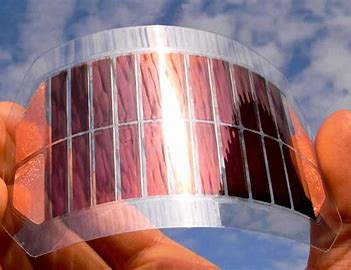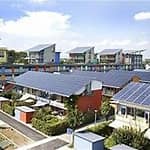Photovoltaic cells, also known as solar cells, are devices that convert light energy directly into electricity through the photovoltaic effect. This effect occurs when certain materials, typically silicon-based semiconductors, absorb photons (particles of light), causing them to release electrons and generate an electric current.
Photovoltaic cells are commonly used to produce solar power in various applications, including:
- Solar Panels: Photovoltaic cells are interconnected to form solar panels, which are installed on rooftops, buildings, and in solar farms to generate electricity from sunlight.
- Off-Grid Power Systems: Photovoltaic cells are used in off-grid systems, such as remote cabins, boats, and RVs, to generate electricity where grid power is unavailable or impractical.
- Grid-Connected Systems: Photovoltaic systems can be connected to the electricity grid, allowing excess electricity generated during the day to be fed back into the grid for use elsewhere and providing the possibility of earning credits or revenue through net metering schemes.
- Portable Chargers: Photovoltaic cells are integrated into portable solar chargers, which are used to charge small electronic devices like smartphones, tablets, and GPS units when no conventional power source is available.
- Solar-Powered Vehicles: Photovoltaic cells can be used to power vehicles, including solar cars, boats, and planes, by converting sunlight into electricity to drive electric motors or charge batteries.
- Solar Lighting: Photovoltaic cells are used in solar-powered outdoor lighting systems, such as garden lights, streetlights, and security lights, to harness sunlight during the day and illuminate areas at night without requiring grid electricity.
Overall, photovoltaic cells play a crucial role in harnessing solar energy and are a key technology in the transition to renewable energy sources, helping to reduce reliance on fossil fuels and mitigate climate change.

How do photovoltaic cells generate electricity?
Photovoltaic cells generate electricity through a process called the photovoltaic effect. Here’s a simplified explanation of how it works:
- Absorption of Photons: When sunlight strikes the surface of a photovoltaic cell, the photons (particles of light) transfer their energy to the electrons in the semiconductor material of the cell.
- Generation of Electron-Hole Pairs: This absorbed energy causes some of the electrons in the semiconductor material to break free from their atoms, creating negatively charged free electrons and positively charged “holes” (locations where electrons are missing).
- Direction of Electron Flow: The electric field within the photovoltaic cell causes the free electrons and holes to move in opposite directions: the free electrons move towards the negative side of the cell (usually the front surface), while the holes move towards the positive side (usually the back surface).
- Creation of Voltage: The movement of electrons and holes creates an imbalance of charge between the front and back surfaces of the cell, resulting in the creation of a voltage potential.
- Generation of Electrical Current: When an external circuit is connected to the cell, such as a wire, the flow of electrons through this circuit generates an electrical current, which can be used to power electrical devices or stored in batteries for later use.
- Conversion of Direct Current (DC): The electricity generated by the photovoltaic cell is in the form of direct current (DC), which can be used directly in some applications or converted into alternating current (AC) using inverters for use in standard electrical grids or household appliances.
Overall, photovoltaic cells harness the energy of sunlight to generate electricity in a clean, renewable, and sustainable manner, making them a key technology in the transition to a more environmentally friendly energy system
